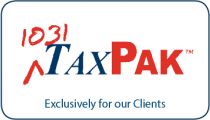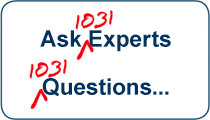You are here
Exchanger Beware › Another 1031 Intermediary Steals Client's Exchange Money › Another 1031 Intermediary Steals Client's Exchange MoneyAnother 1031 Intermediary Steals Client's Exchange Money
Error message
Deprecated function: The each() function is deprecated. This message will be suppressed on further calls in _taxonomy_menu_trails_menu_breadcrumb_alter() (line 436 of /home/expert1031/public_html/sites/all/modules/taxonomy_menu_trails/taxonomy_menu_trails.inc).
Once again, another 1031 intermediary has stolen exchange proceeds. Several months ago I wrote an article about a Minnesota intermediary who lost his clients' exchange proceeds as a result of day trading losses he incurred in a commingled account for their exchanges (see 1031articles.com). This time a California intermediary took the balance of a commingled exchange account.
Remember, one of the rules of entering into a Section 1031 tax-deferred exchange is that the IRS mandates that you use a Qualified Intermediary (QI). Intermediaries can hold client exchange accounts in one of two ways: in a commingled account where the combined proceeds of all client exchanges are held in one single account. For example, if the intermediary has 200 clients, all of their money would be pooled into one bank account.
The alternative way is to hold the money in a separate account for each client. So in this instance, continuing my example from above, the intermediary would have 200 separate accounts--one for each client.
In this new loss, the California intermediary, Linda Ableman who ran CitiEscrow and 1031 Exchange, cleaned out the commingled account she held for her exchange clients and tried to disappear. Like the Minnesota intermediary who suffered massive day trading losses, Ableman' s theft was possible because of the commingled account.
Despite the massive amounts of money held by exchange intermediaries, the intermediary industry is completely unregulated. There is no test, or licensing, or even background checks that are required of intermediaries by either the Federal government or any of the 50 states.
As a practical matter, even a convicted felon can be a qualified intermediary.
While the vast majority of intermediaries are ethical individuals, how do you protect yourself from the few who aren't? The best way is to make sure your funds are held in a separate account (called a "segregated" account by the banking industry). When I say separate I mean a separate account for just your money.
Make sure when you interview a prospective intermediary that they understand that you want your money in an account all by its self. People have told us that the intermediary assured them their money would be in a separate account. Yet it wasn't -- and when confronted, the intermediary claimed that when they said" ...it would be held in a separate account," they meant that their (commingled) account was "separate" from their company' s operating checking account.
Obviously they are "spinning" their answer in an attempt to disguise their commingled account. My mom called this "lying." And don' t be misled by hollow assurances of safety because they have a degree or have passed some test. Just because they have initials after their name, like "Esq." or "CPA" does not mean that your money is magically safe in a commingled account. There are crooks in every profession--you don' t have to be ethical to pass a test. Even if the QI is ethical, what about his employees?
So why would a QI dare NOT segregate accounts? Basically, because it' s more expensive and more time-consuming.
It also requires the QI to have a very solid working relationship with their banker or escrow agent.
It's extra work, but obviously very worthwhile for the client' s safety and security. My company, for example, holds every client' s exchange funds in its own, separate account as we always have because it' s the only real way to protect the funds. Each of our accounts has the client' s name on it (i.e., "The 1031 Exchange Experts, LLC, as intermediary for Fred and Sue Jones"), and the client' s tax identification number, or social security number is the one used for the account.
...when confronted, the QI claimed his accounts were "segregated" because they were separate from the company's operating account.
In addition, to give our clients extra assurance that once the money goes into their exchange account--and that it stays there with no foul play--we developed an internet product called 1031AccessTM. We assign a "secret" portal on our web site to each client for their exchange. This portal, via a specified user-name and ID, allows them to view their money, in their account at the bank, 24/7 via the internet. Their portal is password-protected with a password that they set themselves. In this way, our clients can see what moneys have come into their account, what's gone out, how much interest the account has earned, and what their current interest rate is. Our clients can view online, real-time their interest-bearing FDIC-insured funds.
Like the judge in the Minnesota fraud case said, if your exchange money is in a commingled account, "Caveat Exchanger," or, Exchanger Beware!





Add new comment